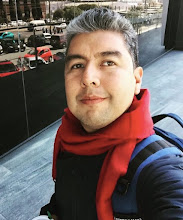A scientist is continuously seeking the truth of nature. There is a jungle of fields to explore from material science to the universe, a scientist could be doing experiments at the laboratory, or maybe they just need a comfortable place to think and create new theories which will explain new phenomena.
|
| Training day: XRD System and software High Score Plus, BUAP |
Today I was able to explore the XRD system at IFUAP (shown in the above picture). The purpose of this visit was to analyze a previous measured XRD pattern. Gratefully the responsible researcher allows me to manipulate the software High Score Plus to perform a qualitative analysis to identify the phases in the material.
 |
| High Score plus, performing phase analysis, and calculation of crystal size. |
To identify the phase three steps should be performed in the following sequence:
- Background determination: This is a must step due phase analysis depends on it.
- Peak search: Automatic + Manual is the best
- Phase analysis: Should be restricted to the constitutive elements to gain time. In my case, the restriction increase using just inorganic materials and star quality powder diffraction files (PDFs) from the database.
Once these three steps are done, the analysis gives you three important values:
- Background: This information is necessary to make a good report where the background should be extracted from the observed XRD measurement.
- Constitutive phases: This data confirms if your material is pure or is mixed
- Crystal size: This parameter gives the size domain D < 100 nm makes you think in the nanoworld.
If you want to know how the XRD system works watch the following video:
Have you ever seen an XRD system with your own eyes?






